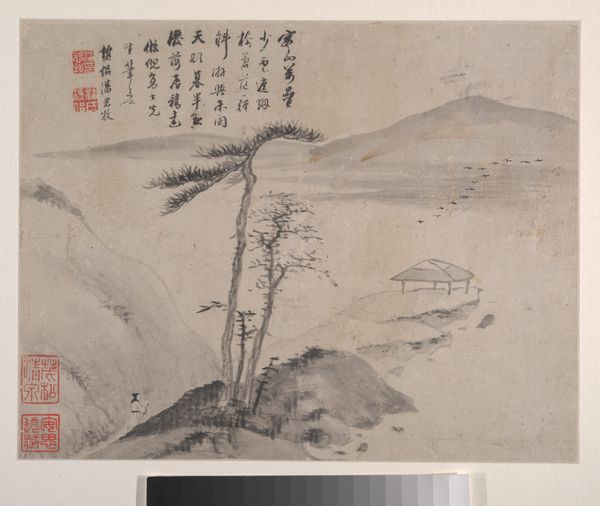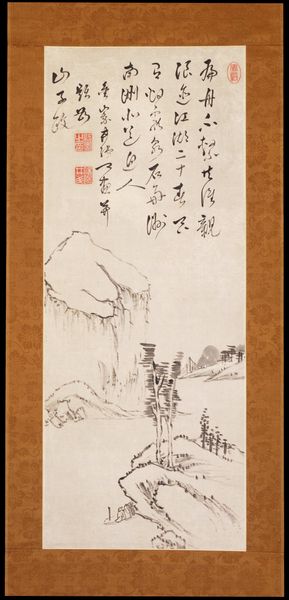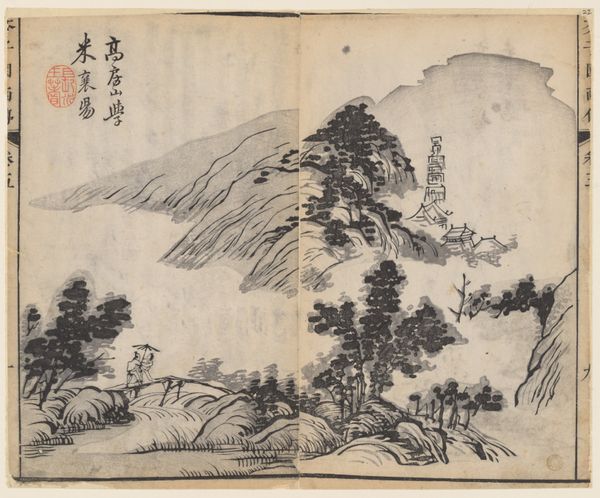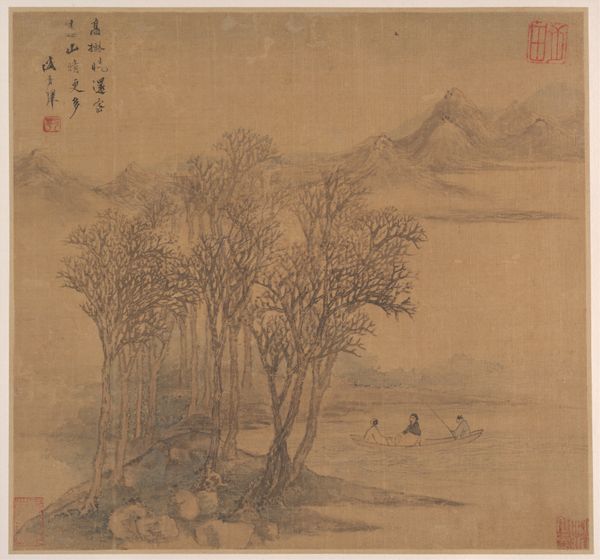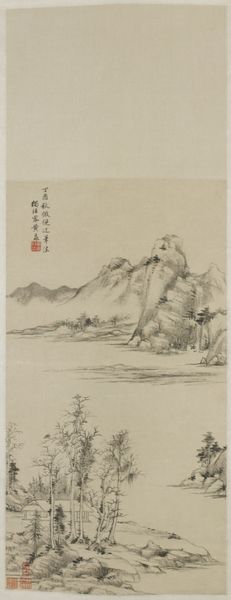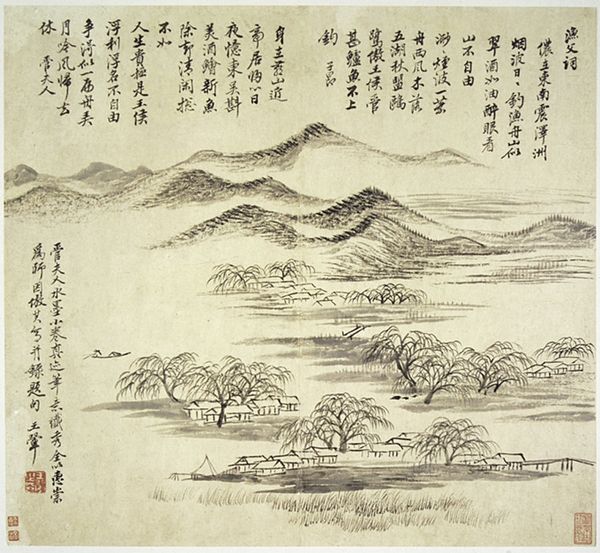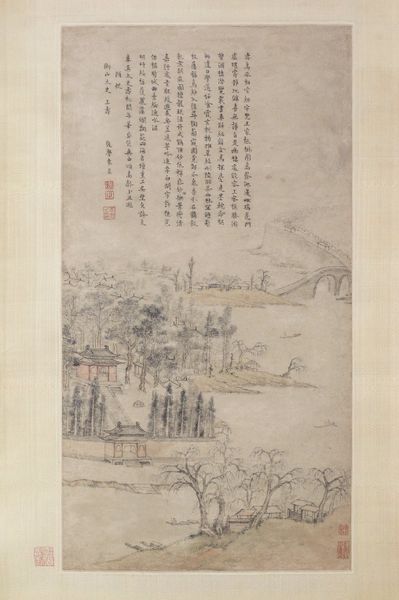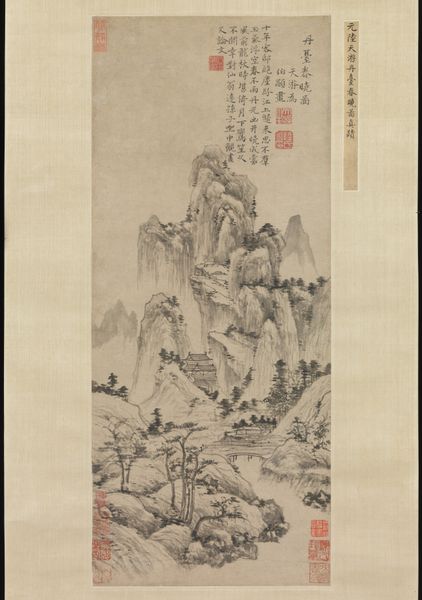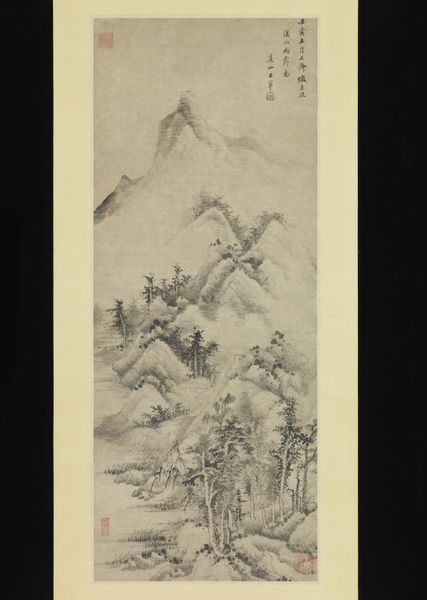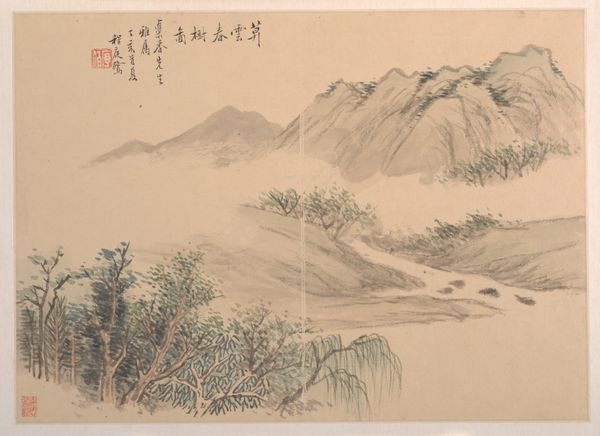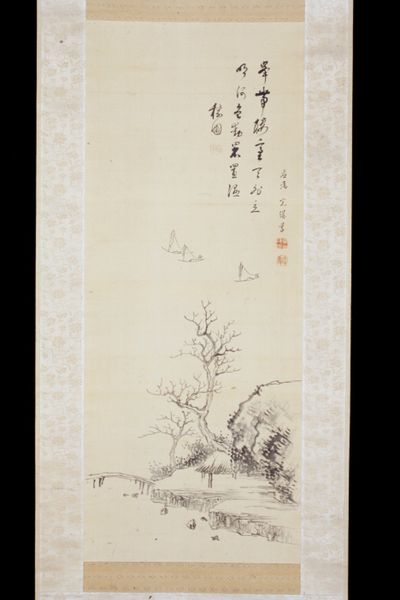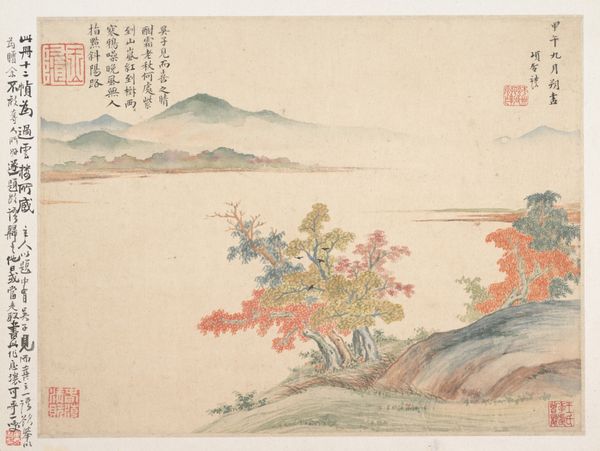
drawing, paper, ink
#
tree
#
drawing
#
medieval
#
asian-art
#
landscape
#
paper
#
ink
#
mountain
Dimensions: Image: 23 1/4 x 12 1/4 in. (59.1 x 31.1 cm) Overall with mounting: 102 1/4 x 22 1/4 in. (259.7 x 56.5 cm) Overall with knobs: 102 1/4 x 27 1/2 in. (259.7 x 69.9 cm)
Copyright: Public Domain
Curator: At first glance, this ink drawing has a delicate melancholy about it. Editor: That's right. What you’re seeing is "Wind among the Trees on the Riverbank" created in 1363 by Ni Zan, a pivotal figure in Chinese landscape painting during the Yuan dynasty. It’s now held in the collection of the Metropolitan Museum of Art. Curator: It definitely has the air of a much older work about it. It's deceptively simple, with just a few bare trees on a riverbank and mountains in the distance. A minimal composition—I'd love to know more about its subtleties. Editor: Well, Ni Zan was known for his spare, almost austere style, a conscious rejection of the more elaborate court painting styles. This drawing, done with ink on paper, reflects that ethos of simplicity. It’s not just a landscape, it’s a statement of personal values. Curator: You can feel that rebellion in the bareness. Those skeletal trees, that vast emptiness. It's as if he’s stripping away all the unnecessary ornamentation to get to the very soul of the landscape. It’s interesting to see his commitment in removing human figures; this amplifies the sense of the viewer as a wandering sojourner. Editor: Exactly. During the Yuan dynasty, many Chinese intellectuals, including Ni Zan, felt alienated by the Mongol rulers. His paintings, in many ways, became a form of silent protest, a way to express his disaffection and longing for a more idealized past. Curator: So the starkness isn’t just aesthetic, but deeply political. Knowing the historical context changes how I perceive the blank spaces—they represent a loss or yearning for what isn't there anymore. Editor: Absolutely. And the very act of painting in this style was also important. The literati painters like Ni Zan valued personal expression over technical perfection. The rough, seemingly effortless brushstrokes speak to that ideal. Curator: It’s that balance of effortless execution with underlying intensity which gets to me, personally. There’s so much thought, emotion and context—making what looks spontaneous an almost perfect artistic calculation. Editor: Indeed, Ni Zan's legacy lies in how he used landscape painting as a medium to convey his inner life and critique the social realities around him. Curator: Well, it makes me appreciate its minimalist aesthetic and gives me new awareness on its expression of complex feelings during those historical periods. Editor: Me too! Seeing it again through Ni’s eyes really adds layers of depth.
Comments
No comments
Be the first to comment and join the conversation on the ultimate creative platform.
